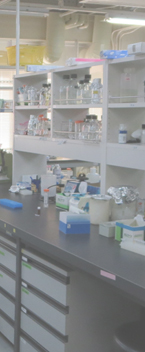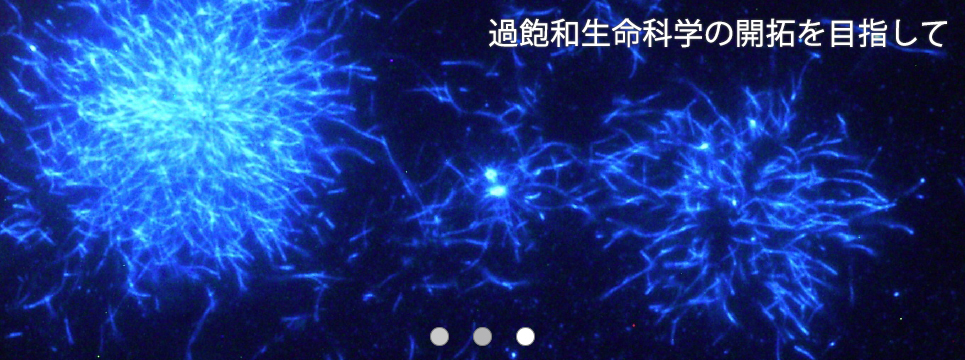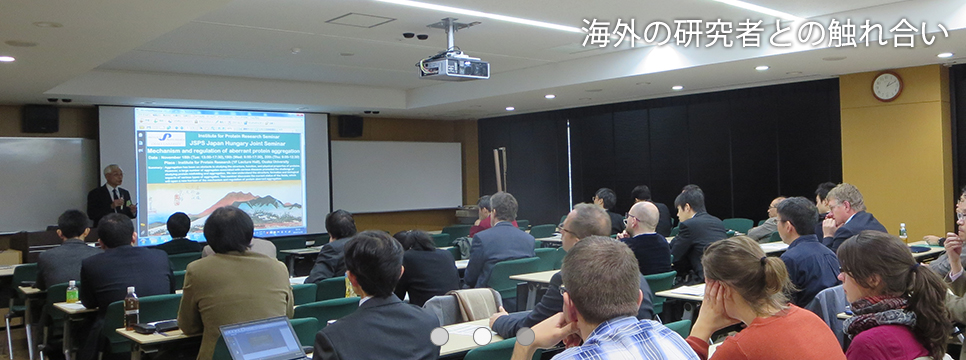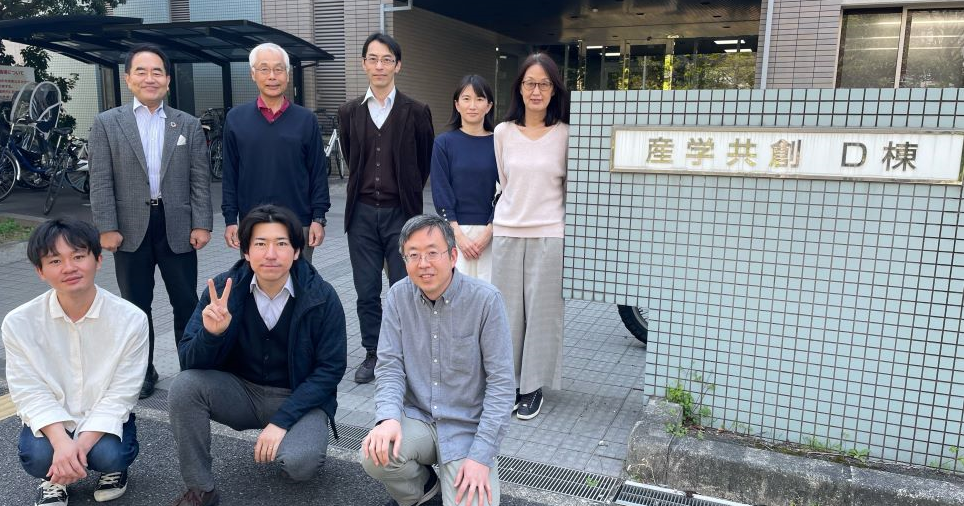News
-
Mini-Workshop on alpha-Synuclein Amyloid Formation
Date: Tuesday, June 17, 2025, 2:00 PM - 5:00 PM
Place: Lecture Hall, Institute for Protein Research, Osaka University
14:00-14:50: Conformational switch in the alpha-synuclein C-terminus domain directs its fibril polymorphism
Dr. César Aguirre Martínez (Osaka University Graduate School of Medicine)
15:00-16:00: Mechanisms of alpha-synuclein aggregation and inhibition
Prof. Jean Baum (Department of Chemistry and Chemical Biology, Rutgers University)
16:00-17:00: Roundtable discussion: seeking the new perspective of the amyloid world.
Mini-Workshop on alpha-Synuclein Amyloid Formation
-
2025年2月3日 論文を発表しました
2025.2.3 Our latest study is now online! Keiichi Yamaguchi, Kichitaro Nakajima, Hirotsugu Ogi, Yuji Goto
Mechanism of amyloid fibril formation triggered by breakdown of supersaturation,
npj Biosensing, (2025)[DOI:10.1038/s44328-025-00028-z]
-
2025年1月31日 「ペリスタポンプによるアミロイド形成反応」に関する論文を発表しました。身近にあるペリスタポンプが、さまざまな蛋白質のアミロイド線維を作り出します。せん断力が生体内でのアミロイド形成の要因であることを示唆します。
2025.1.31 Our latest study is now online! Yuji Gotoa,Tomoki Ota, Wenlou Yuan, Ikuko Yumen, Keiichi Yamaguchi, Hirokazu Matsuda, Suguru Yamamoto, and Hirotsugu Ogi.
Peristaltic pump-triggered amyloid formation suggests shear stresses are in vivo risks for amyloid nucleation,
npj Biosensing, (2025)[DOI:10.1038/s44328-025-00027-0]
ペリスタポンプ・アミロイド形成装置の構成
イメージ動画
-
2025年1月28日 論文を発表しました
2025.1.28 Our latest study is now online! Keiichi Yamaguchi, Joji Mima, Kichitaro Nakajima, Hiroki Sakuta, Kenichi Yoshikawa, Yuji Goto
Accelerated amyloid fibril formation at the interface of liquid–liquid phase-separated droplets by depletion interactions,
Protein Science, (2025)[DOI:10.1002/pro.5163]
-
2024年2月19日 「過飽和、アミロイド形成、プロテオスタシス」に関する総説論文を発表しました
2024.2.19 Our latest study is now online! Yuji Goto, Kichitaro Nakajima,Suguru Yamamoto, Keiichi Yamaguchi.
Supersaturation, a Critical Factor Underlying Proteostasis of Amyloid Fibril Formation,
Journal of Molecular Biology, (2024)[DOI:10.1016/j.jmb.2024.168475]
-
2023年8月21日 構造形成研究室同窓会を7月29日に開催しました。
2023.8.21 Alumni reunion was held on July 29th.
ポスターはこちら
Poster
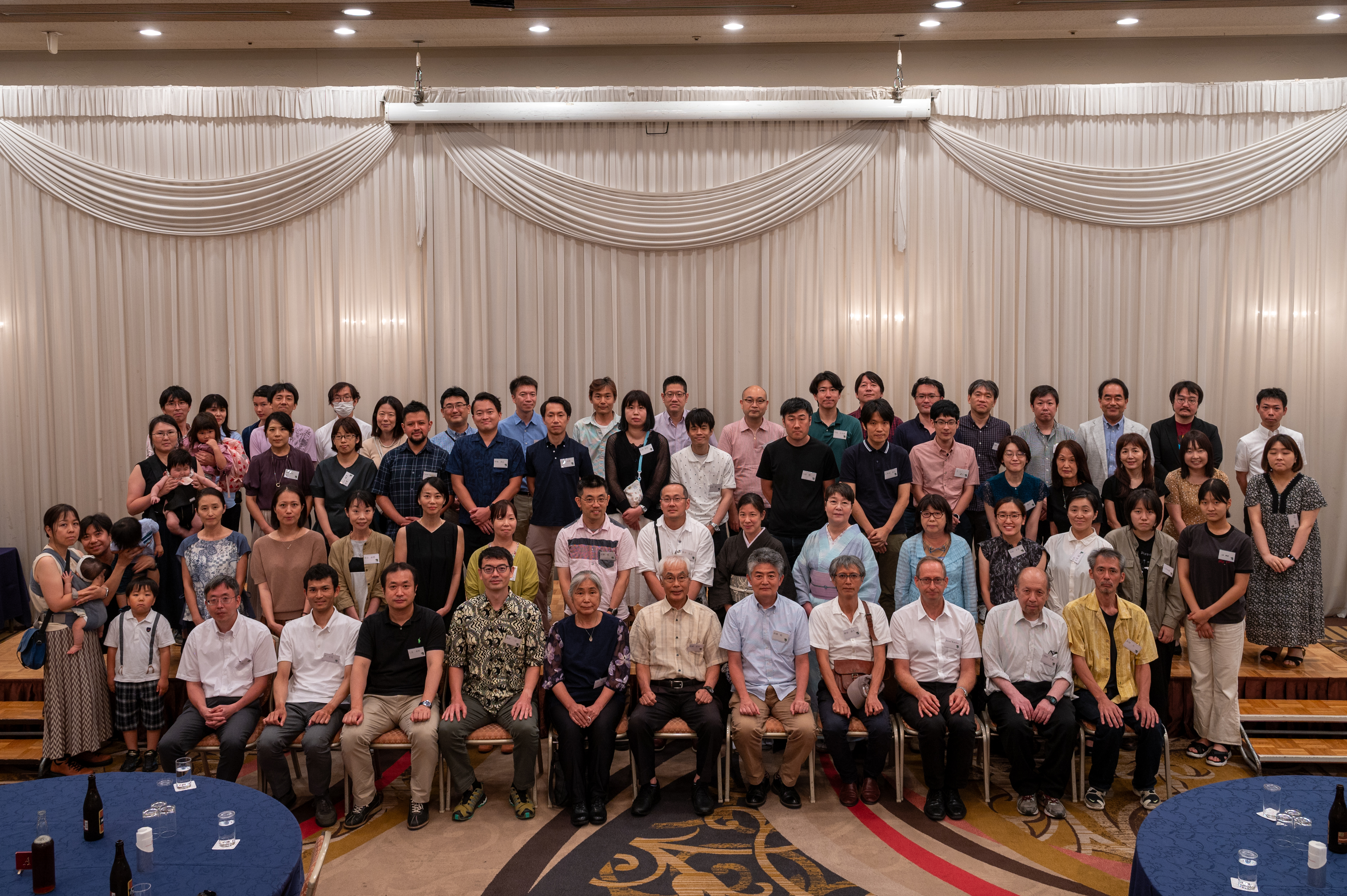
-
2023年3月23日 論文を発表しました
2023.3.23 Our latest study is now online! Keiichi Yamaguchi, Kichitaro Nakajima, Yuji Goto.
Mechanisms of polyphosphate-induced amyloid fibril formation triggered by breakdown of supersaturation,
Biophysics and Physicobiology, (2023)[DOI:10.2142/biophysico.bppb-v20.0013]
-
2023年3月14日 学振拠点セミナー(Munich)<2/16-17開催>の報告書を掲載しました
2023.3.14 Our report of Munich has been uploaded.詳細はこちら
Report
-
2023年3月7日 第3回若手育成ワークショップ("蛋白質のCD測定と二次構造解析)<1/27開催>の報告書を掲載しました
2023.3.7 Our report of seminar has been uploaded.詳細はこちら
Report
-
2023年2月27日 学振拠点セミナー(Protein folding and misfolding)<12/6開催>の報告書を掲載しました
2023.2.27 Our report of seminar has been uploaded.詳細はこちら
Report
-
2023年1月24日 学振拠点セミナー(Wollongong)<11/21-24>の報告書を掲載しました
2023.1.24 Our report of Wollongong has been uploaded.詳細はこちら
Report
-
2023年1月12日 第3回若手育成ワークショップ "蛋白質のCD測定と二次構造解析" を1/27(金)に開催します。奮ってご参加ください。
2023.1.12 We will hold a workshop on 1/27."BeStSel with Best Scene, toward Best Sailing"
ポスターはこちら
※要事前参加登録、参加費:無料
参加登録はこちら
第2回ポスターはこちら
第1回ポスターはこちら
Poster
-
2022年12月5日 JSPS Core-to-Core seminar "Protein folding and misfolding"を12月6日に開催します。奮ってご参加ください。
2022.12.5 JSPS Core-to-Core seminar "Protein folding and misfolding"
ポスターはこちら
Poster
-
2022年10月3日 論文を発表しました
2022.10.3 Our latest study is now online! Kichitaro Nakajima, Keiichi Yamaguchi, Masahiro Noji, César Aguirre, Kensuke Ikenaka, Hideki Mochizuki, Lianjie Zhou, Hirotsugu Ogi, Toru Ito, Ichiei Narita, Fumitake Gejyo, Hironobu Naiki, Suguru Yamamoto and Yuji Goto.
:Macromolecular crowding and supersaturation protect hemodialysis patients from the onset of dialysis-related amyloidosis,
nature communications, (2022)[DOI:10.1038/s41467-022-33247-3]
プレスリリースの全文はこちら
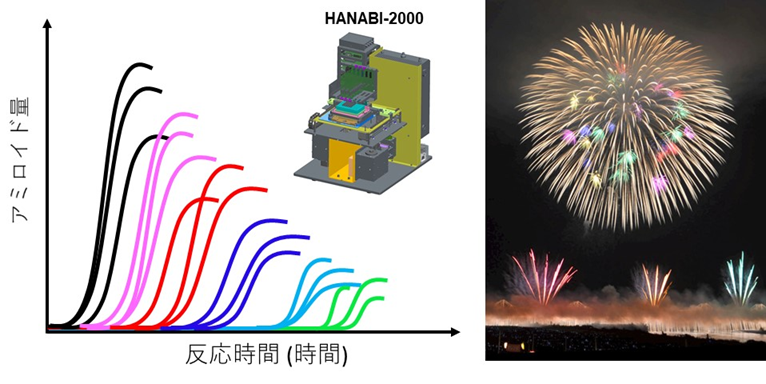
-
2022年7月25日 寄附講座の教育研究成果等の概要を掲載しました
2022.7.25 Our summary of achievements has been uploaded.詳細はこちら
-
2022年7月21日 論文を発表しました
2022.7.21 Our latest study is now online! Yuji Goto, Masahiro Noji, Kichitaro Nakajima and Keiichi Yamaguchi.
Supersaturation-Dependent Formation of Amyloid Fibrils,
Molecules, (2022)[DOI:10.3390/molecules27144588]
-
2022年7月5日 論文を発表しました
2022.7.5 Our latest study is now online! Yuki Yoshikawa, Keisuke Yuzu, Naoki Yamamoto, Ken Morishima, Rintaro Inoue, Masaaki Sugiyama, Tetsushi Iwasaki, Masatomo So, Yuji Goto, Atsuo Tamura and Eri Chatani.
Pathway Dependence of the Formation and Development of Prefibrillar Aggregates in Insulin B Chain,
Molecules , (2022)[DOI:10.3390/molecules27133964]
-
2022年7月5日 論文を発表しました
2022.7.5 Our latest study is now online! Henrietta Vadászi, Bence Kiss, András Micsonai, Gitta Schlosser, Tamás Szaniszló, Réka Á.Kovács, Balázs A.Györffy, Katalin A.Kékesi1, Yuji Goto, Barbara Uzonyi, Károly Liliom and József Kardos.
Competitive inhibition of the classical complement pathway using exogenous single-chain C1q recognition proteins,
Journal of Biological Chemistry, (2022)[DOI:10.1016/j.jbc.2022.102113]
-
2022年7月5日 論文を発表しました
2022.7.5 Our latest study is now online! Kentaro Noi, Kichitaro Nakajima, Keiichi Yamaguchi, Masatomo So, Kensuke Ikenaka, Hideki Mochizuki, Yuji Goto and Hirotsugu Ogi.
Acceleration of amyloid fibril formation by multichannel sonochemical reactor,
Japanese Journal of Applied Physics, (2022)[DOI:10.35848/1347-4065/ac4142]
-
2022年7月5日 論文を発表しました
2022.7.5 Our latest study is now online! Makoto Hideshima, Yasuyoshi Kimura, César Aguirre, Keita Kakuda, Toshihide Takeuchi, Chi-Jing Choong, Junko Doi, Kei Nabekura, Keiichi Yamaguchi, Kichitaro Nakajima, Kousuke Baba, Seiichi Nagano, Yuji Goto, Yoshitaka Nagai, Hideki Mochizuki and Kensuke Ikenaka.
Two-step screening method to identify α-synuclein aggregation inhibitors for Parkinson’s disease,
Scientific Reports, (2022)[DOI:10.1038/s41598-021-04131-9]
-
2022年7月5日 論文を発表しました
2022.7.5 Our latest study is now online! András Micsonai, Éva Moussong, Frank Wien, Eszter Boros, Henrietta Vadászi, Nikoletta Murvai, Young-Ho Lee, Tamás Molnár, Matthieu Réfrégiers, Yuji Goto, Ágnes Tantos, and József Kardos.
BeStSel: webserver for secondary structure and fold prediction for protein CD spectroscopy,
Nucleic Acids Research, (2022)[hal-03670788]
-
2022年6月30日 蛋白質凝集制御デバイス寄附研究部門2020-2021年度活動報告および寄附講座終了報告を掲載しました
2021.6.30 Our 2020-2021 activity report has been uploaded.詳細はこちら
-
2022年1月11日 論文を発表しました
2022.1.11 Our latest study is now online! Yuji Goto , Kichitaro Nakajima, Keiichi Yamaguchi, Masatomo So, Kensuke Ikenaka, Hideki Mochizuki, and Hirotsugu Ogi.
:Development of HANABI, an ultrasonication-forced amyloid fibril inducer,
Neurochemistry International, (2022)[DOI:10.1016/j.neuint.2021.105270]
-
2021年11月25日 論文を発表しました
2021.11.25 Our latest study is now online! Masahiro Noji , Yuji Goto
:蛋白質フォールディングとミスフォールディングの統合,
生物物理, (2021)[DOI:10.2142/biophys.61.358]
-
2021年11月17日 論文を発表しました
2021.11.17 Our latest study is now online! Éva Bulyáki, Judit Kun, Tamás Molnár, Alexandra Papp, András Micsonai, Henrietta Vadászi, Borbála Márialigeti, Attila István Kovács, Gabriella Gellén, Keiichi Yamaguchi, Yuxi Lin, Masatomo So, Mihály Józsi, Gitta Schlosser, Young-Ho Lee, Károly Liliom, Yuji Goto, József Kardos
:Pathogenic D76N Variant of β2-Microglobulin: Synergy of Diverse Effects in Both the Native and Amyloid States,
Biology, (2021)[DOI:10.3390/biology10111197]
-
2021年10月7日 論文を発表しました
2021.10.7 Our latest study is now online! Keiichi Yamaguchi, Kenshiro Hasuo, Masatomo So, Kensuke Ikenaka, Hideki Mochizuki, and Yuji Goto
:Strong acids induce amyloid fibril formation of β2-microglobulin via an anion-binding mechanism,
Journal of Biological Chemistry, (2021)[DOI:10.1016/j.jbc.2021.101286]
-
2021年9月1日 論文を発表しました
2021.9.1 Our latest study is now online! Kichitaro Nakajima, Hajime Toda, Keiichi Yamaguchi, Masatomo So,Kensuke Ikenaka, Hideki Mochizuki, Yuji Goto, and Hirotsugu Ogi
:Half-Time Heat Map Reveals Ultrasonic Effects on Morphology and Kinetics of Amyloidogenic Aggregation Reaction,
ACS Chem. Neurosci., (2021)[DOI:10.1021/acschemneuro.1c00461]
-
2021年8月5日 論文を発表しました
2021.8.5 Our latest study is now online! Kentaro Noi, Kensuke Ikenaka, Hideki Mochizuki, Yuji Goto, and Hirotsugu Ogi.
:Disaggregation Behavior of Amyloid β Fibrils by Anthocyanins Studied by Total-Internal-Reflection-Fluorescence Microscopy Coupled with a Wireless Quartz-Crystal Microbalance Biosensor,
Analytical Chemistry, (2021)[DOI:10.1021/acs.analchem.1c01720]
-
2021年5月27日 論文を発表しました
2021.5.27 Our latest study is now online! Masatomo So, Yuto Kimura, Keiichi Yamaguchi, Toshihiko Sugiki, Toshimichi Fujiwara, César Aguirre, Kensuke Ikenaka, Hideki Mochizuki, Yasushi Kawata, and Yuji Goto.
:Polyphenol-solubility alters amyloid fibril formation of α-synuclein,
Protein Science, (2021)[DOI:10.1002/pro.4130]
-
2021年5月17日 蛋白質凝集制御デバイス寄附研究部門2020年度活動報告を掲載しました
2021.5.17 Our 2020 activity report has been uploaded.詳細はこちら
-
2021年4月21日 論文を発表しました
2021.4.21 Our latest study is now online! Eri Chatani, Keisuke Yuzu, Yumiko Ohhashi, and Yuji Goto.
:Current Understanding of the Structure, Stability and Dynamic Properties of Amyloid Fibrils,
International Journal of Molecular Sciences, (2021)[DOI:10.3390/ijms22094349]
-
2021年3月20日 オンラインセミナーにて発表を行いました
2021.3.4 Professor Goto made a presentation at the online seminar. :Breakdown of supersaturation links the Anfinsen's folding universe and the misfolding universe,
動画はこちら
セミナーWebサイトはこちら
-
2021年3月4日 論文を発表しました
2021.3.4 Our latest study is now online! Keiichi Yamaguchi, Masatomo So, César Aguirre, Kensuke Ikenaka, Hideki Mochizuki, Yasushi Kawata, and Yuji Goto.
:Polyphosphates induce amyloid fibril formation of α-synuclein in concentration-dependent distinct manners,
Journal of Biological Chemistry, (2021)[DOI:10.1016/j.jbc.2021.100510]
-
2021年3月3日 論文を発表しました
2021.3.3 Our latest study is now online! Kichitaro Nakajima, Kentaro Noi, Keiichi Yamaguchi, Masatomo So, Kensuke Ikenaka, Hideki Mochizuki, Hirotsugu Ogi, and Yuji Goto.
:Optimized sonoreactor for accelerative amyloid-fibril assays through enhancement of primary nucleation and fragmentation,
Ultrasonics Sonochemistry, (2021)[DOI:10.1016/j.ultsonch.2021.105508]
-
2021年1月26日 論文を発表しました
2021.1.26 Our latest study is now online! Masahiro Noji, Tatsushi Samejima, Keiichi Yamaguchi, Masatomo So, Keisuke Yuzu, Eri Chatani, Yoko Akazawa-Ogawa, Yoshihisa Hagihara, Yasushi Kawata, Kensuke Ikenaka, Hideki Mochizuki, József Kardos, Daniel E. Otzen,Vittorio Bellotti, Johannes Buchner, and Yuji Goto.
:Breakdown of supersaturation barrier links protein folding to amyloid formation,
Communications Biology, (2021)[DOI:10.1038/s42003-020-01641-6]
プレスリリース詳細はこちら
プレスリリースの全文はこちら
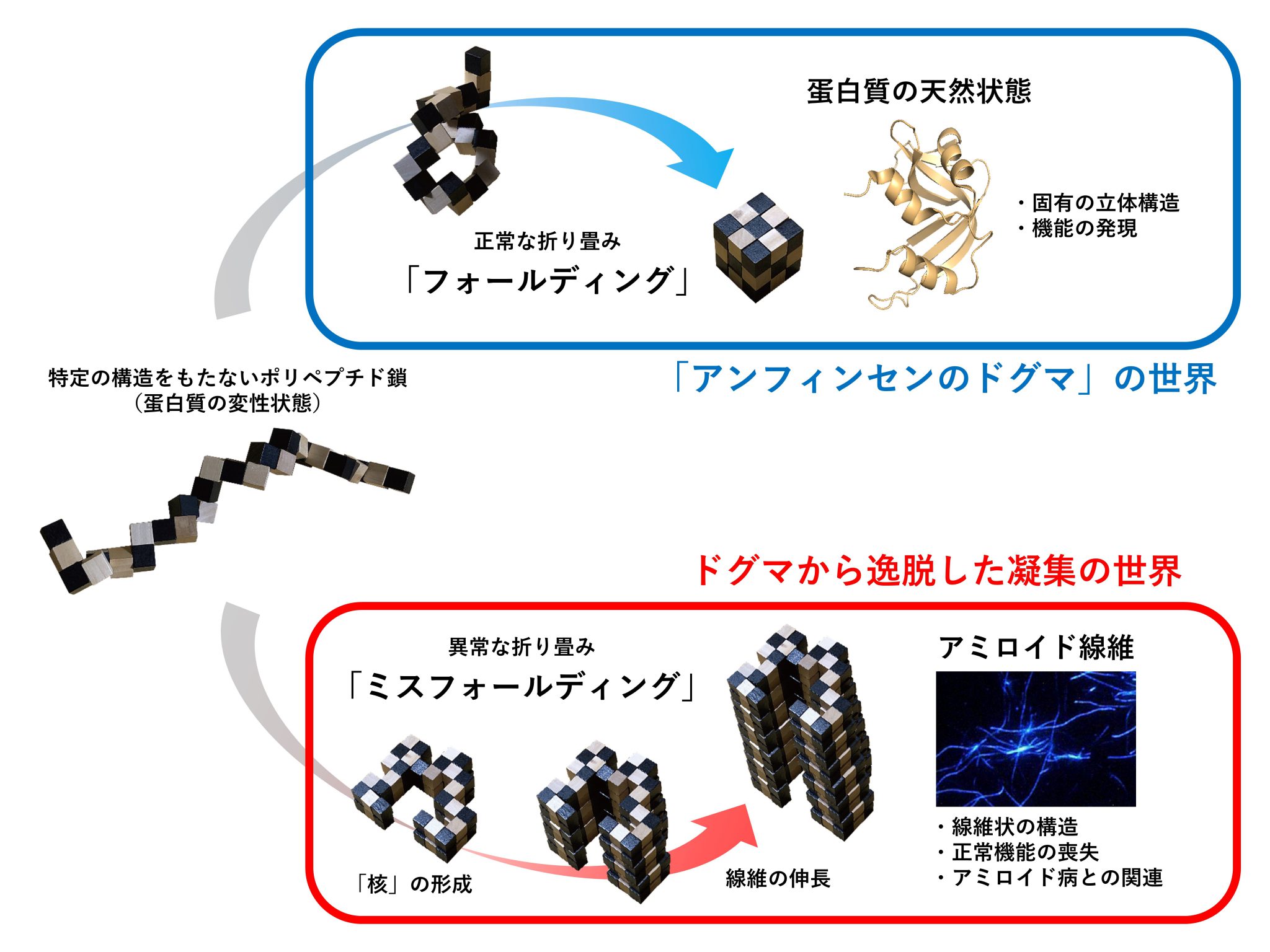
-
2020年8月27日 論文がacceptされました
2020.8.27 Our latest study is now online! Hiroki Mizuno, Junichi Hoshino, Masatomo So, Yuta Kogure, Takeshi Fujii, Yoshifumi Ubara, Kenmei Takaichi, Tetsuko Nakaniwa, Hideaki Tanaka, Genji Kurisu, Fuyuki Kametani, Mayuko Nakagawa,Tsuneaki Yoshinaga, Yoshiki Sekijima, Keiichi Higuchi, Yuji Goto, and Masahide Yazaki.
:Dialysis-Related Amyloidosis Associated with a Novel β2-Microglobulin Variant,
Amyloid, (2020)[DOI:10.1080/13506129.2020.1813097]
-
2020年 8月20日 3月に行われた最終講義の様子を掲載しました。
2020.8.20 The state of the retirement event held in March is uploaded.
詳細はこちら
-
2020年7月20日 論文がacceptされました
2020.7.20 Our latest study is now online! Nakajima K, Yamazaki T, Kimura Y, So M, Goto Y, Ogi H.
:Time-Resolved Observation of Evolution of Amyloid-β Oligomer with Temporary Salt Crystals,
J Phys Chem Lett, (2020)[PMID: 32687370]
-
2020年 5月1日 研究室を引越しました。
2020.5.1 Our laboratory moved
新しい研究室は産学共創D棟6階です。詳細はこちら
New laboratory is on 6F of Bldg. D, Industry-University Co-creation and University Advancement. Access
-
2020年4月9日 論文がacceptされました
2020.4.9 Our latest study is now online!
Sawada M, Yamaguchi K, Hirano M, Noji M, So M, Otzen D, Kawata Y, Goto Y.
:Amyloid Formation of α-Synuclein Based on the Solubility- and Supersaturation-Dependent Mechanism,
Langmuir, (2020)[PMID: 32271585]
-
2019年 11月13日 霜月セミナー "Revisiting the most amyloidogenic region of insulin"
2019.11.13 霜月("Shimotsuki"=November) seminar "Revisiting the most amyloidogenic region of insulin"
ポスターはこちら
Poster
-
2019年 9月12日、9月13日 蛋白研セミナー"液-液相分離の新たな展開へ向けて"
詳細はこちら
-
2019年7月19日 第2回若手育成ワークショップ "蛋白質のCD測定と二次構造解析" を開催します。
ポスターはこちら
※要事前参加登録、参加費:無料
参加登録はこちら
-
2019年6月19日 神無月セミナー "リン酸化酵素のフォールディング中間体を標的とした創薬研究"
ポスターはこちら
-
2019年6月11日 論文のプレリリースをしました。
詳細はこちら
-
2019年6月11日 論文がacceptされました
2019.6.11 Our latest study is now online!
Zhang C, Yamaguchi K, So M, Sasahara K, Ito T, Yamamoto S, Narita I, Kardos J, Naiki H, Goto Y.
:Possible mechanisms of polyphosphate-induced amyloid fibril formation of β2-microglobulin ,
Proc Natl Acad Sci U S A. , (2019)[PMID: 31182591]
-
2019年5月14日 皐月セミナー "タンパク質デザインによるバイオなのロボットの創成を目指して"
ポスターはこちら
-
2018年10月19日 神無月セミナー "Should the Treatment of Amyloidosis Be Personified? Molecular Mechanism of Amyloid Formation by Abeta Peptide and Its Fragment"
2018.10.19日 神無月("Kan-nazuki"=October) seminar "Should the Treatment of Amyloidosis Be Personified? Molecular Mechanism of Amyloid Formation by Abeta Peptide and Its Fragment"
ポスターはこちら
Poster
-
2018年9月6日 論文がacceptされました
2018.9.6 Our latest study is now online!
Noji M, So M, Yamaguchi K, Hojo H, Onda M, Akazawa-Ogawa Y, Hagihara Y, Goto Y.
Heat-Induced Aggregation of Hen Ovalbumin Suggests a Key Factor Responsible for Serpin Polymerization.,
Biochemistry. , (2018)[PMID: 30148614]
-
2018年8月3日 論文がacceptされました
2018.8.3 Our latest study is now online!
Adachi M, Noji M, So M, Sasahara K, Kardos J, Naiki H, Goto Y.
Aggregation-phase diagrams of β2-microglobulin reveal temperature and salt effects on competitive formation of amyloids versus amorphous aggregates.,
J Biol Chem. , (2018)[PMID: 30077972]
-
2018年 8月11日 構造形成研究室 葉月セミナー
ポスターはこちら
-
2018年 6月29日 水無月セミナー "Role of H3K27 Crotonylation in Gene Transcriptional Repression in Chromatin"
ポスターはこちら
-
2018年 6月27日 第3回 APPA/PS/PSSJジョイントワークショップ&蛋白研セミナー
ポスターはこちら
-
2018年 6月25日 水無月セミナー "Intrinsic disorder, protein aggregation, and membrane-less organelles"
ポスターはこちら
-
2018年 6月22日 若手育成ワークショップ 「蛋白質のCD測定と二次構造解析」
ポスターはこちら
-
2018年 6月8日 水無月セミナー "蛋白質凝集と核酸"
ポスターはこちら
-
2018年 5月18日 皐月セミナー "Molecular crowding effect"
ポスターはこちら
-
2018年 4月25日 卯月セミナー “セルピン~ドグマに反する蛋白質”
ポスターはこちら
-
2017.12.14 論文がacceptされました
Terakawa MS, Lee YH, Kinoshita M, Lin Y, Sugiki T, Fukui N, Ikenoue T, Kawata Y, Goto Y.
Membrane-induced initial structure of α-synuclein control its amyloidogenesis on model membranes.,
Biochim Biophys Acta. , (2017)[PMID: 29273335]
-
2017年 12月3日、12月4日、12月5日 Australian National University (ANU) & IPR 2nd Joint Symposium 2017 “PROTEIN STRUCTURE AND FUNCTION”
ポスターはこちら
詳細はこちら
-
2017.11.19 論文がacceptされました
Goto Y, Adachi M, Muta H, So M.
Salt-induced formations of partially folded intermediates and amyloid fibrils suggests a common underlying mechanism.,
Biophys Rev. , (2017)[PMID: 29256120]
-
2017.11.3 論文がacceptされました
Nitani A, Muta H, Adachi M, So M, Sasahara K, Sakurai K, Chatani E, Naoe K, Ogi H, Hall D, Goto Y.
Heparin-dependent aggregation of hen egg white lysozyme reveals two distinct mechanisms of amyloid fibrillation.,
J Biol Chem. , (2017)[PMID: 29101231]
-
2017.10.2 論文がacceptされました
Y. Matsushita, H. Sekiguchi, C. Jae Wong, M. Nishijima, K. Ikezaki, D. Hamada, Y. Goto & Y. C. Sasaki
Nanoscale Dynamics of Protein Assembly Networks in Supersaturated Solutions.,
Scientific Reports. , (2017)[PMID: 29093529]
-
2017.8.10 論文がacceptされました
Sakurai K, Yagi M, Konuma T, Takahashi S, Nishimura C, Goto Y.
Non-native α-Helices in the Initial Folding Intermediate Facilitate the Ordered Assembly of the β-Barrel in β-Lactoglobulin.,
Biochemistry. , (2017)[PMID: 28795569]
-
2017年 9月11日、9月12日 蛋白研セミナー
詳細はこちら
-
2017年 7月29日 文月セミナー3
詳細はこちら
-
2017年 7月18日 文月セミナー2
詳細はこちら
-
2017年 7月 3日 文月セミナー
詳細はこちら
-
2017年 6月21日 蛋白研セミナー(蛋白質科学会)
詳細はこちら
-
2017.6.13 論文がacceptされました
Kinoshita M, Kakimoto E, Terakawa MS, Lin Y, Ikenoue T, So M, Sugiki T, Ramamoorthy A, Goto Y, Lee YH.
Model membrane size-dependent amyloidogenesis of Alzheimer's amyloid-β peptides.,
Phys Chem Chem Phys. , (2017)[PMID: 28608875]
-
2017.3.16 論文がacceptされました
Nakajima K, So M, Takahashi K, Tagawa YI, Hirao M, Goto Y, Ogi H.
Optimized Ultrasonic Irradiation Finds Out Ultrastable Aβ1-40 Oligomers.,
J Phys Chem B. , (2017)[PMID: 28260388]
-
2017.2.12 論文がacceptされました
So M, Hata Y, Naiki H, Goto Y
Heparin-induced amyloid fibrillation of β2 -microglobulin explained by solubility and a supersaturation-dependent conformational phase diagram.,
Protein Sci. , (2017)[PMID: 28249361]
-
2017年1月26-27日 蛋白研セミナー
詳細はこちら
-
2016.11.28 論文がacceptされました
Nakajima K1, Nishioka D1, Hirao M1, So M2, Goto Y2, Ogi H1.
Drastic acceleration of fibrillation of insulin by transient cavitation bubble.,
Ultrason Sonochem. , (2016)[PMID: 28069203]
-
2016.11.23 論文がacceptされました
Zhao R, So M, Maat H, Ray NJ, Arisaka F, Goto Y, Carver JA, Hall D.
Measurement of amyloid formation by turbidity assay-seeing through the cloud.,
Biophys Rev. , (2016)[PMID: 28003859]
-
2016年10月4日 蛋白研セミナー
詳細はこちら
-
2016年7月30日 蛋白研セミナー
詳細はこちら
-
2016.6.6 論文がacceptされました
Noda S, So M, Adachi M, Kardos J, Akazawa-Ogawa Y, Hagahara Y, Goto Y.
Thioflavin T-Silent Denaturation Intermediates Support the Main-Chain-Dominated Architecture of Amyloid Fibrils.,
Biochemistry , (2016)[PMID: 7345358]
-
2016年6月6日 蛋白研セミナー
詳細はこちら
-
2016.2.17 論文がacceptされました
So M, Hall D, Goto Y.
Revisiting supersaturation as a factor determining amyloid fibrillation.,
Curr Opin Struct Biol. , (2016)[PMID: 26774801]
-
2016.2.17 論文がacceptされました
Hall D, Zhao R, Dehlsen I, Bloomfield N, Williams SR, Arisaka F, Goto Y, Carver JA.
Protein aggregate turbidity: Simulation of turbidity profiles for mixed aggregation reactions.,
Anal Biochem. , (2016)[PMID: 26763936]
-
2016.2.2 論文がacceptされました
Lin Y, Kardos J, Imai M, Ikenoue T, Kinoshita M, Sugiki T, Ishimori K, Goto Y, Lee YH.
Amorphous aggregation of cytochrome c with inherently low amyloidogenicity is characterized by the metastability of supersaturation and the phase diagram.,
Langmuir. , (2016)[PMID: 26824789]
-
2016.2.2 論文がacceptされました
Aguirre C, Goto Y, Costas M.
Revisiting supersaturation as a factor determining amyloid fibrillation.,
Curr Opin Struct Biol. , (2016)[PMID: 26823168]
-
2016.1.9 論文がacceptされました
Masatomo So, Damien Hall, Yuji Goto.
Revisiting supersaturation as a factor determining amyloid fibrillation,
Current Opinion in Structural Biology. , (2016)[doi:10.1016/j.sbi.2015.11.009]
-
2015年11月14日-16日 Australian National University(ANU)&IPR Joint Symposium 2015
詳細はこちら
-
2015年10月9日 メンバーを更新しました
詳細はこちら
-
2015年10月6日 神無月セミナー
詳細はこちら
-
2015.8.24 論文がacceptされました
So M, Ishii A, Hata Y, Yagi H, Naiki H, Goto Y.
Supersaturation-limited and unlimited phase spaces compete to produce maximal amyloid fibrillation near the critical micelle concentration of sodium dodecyl sulfate.,
Langmuir. , (2015)[PMID: 26291985]
-
2015.8.21 論文がacceptされました
Konuma T, Sakurai K, Yagi M, Goto Y, Fujisawa T, Takahashi S.
Highly Collapsed Conformation of the Initial Folding Intermediates of β-Lactoglobulin with Non-Native α-Helix.,
J Mol Biol. , (2015)[PMID: 26232603]
-
2015.6.22 論文がacceptされました
Kinoshita M, Kim JY, Kume S, Sakakibara Y, Sugiki T, Kojima C, Kurisu G, Ikegami T, Hase T, Kimata-Ariga Y, Lee YH.
Physicochemical nature of interfaces controlling ferredoxin NADP+ reductase activity through its interprotein interactions with ferredoxin.,
Biochim Biophys Acta.-Bioenergetics , (2015)[PMID: 26087388]
-
2015年6月18日 水無月セミナー
詳細はこちら
-
2015.6.15 論文がacceptされました
Adachi M, So M, Sakurai K, Kardos J, Goto Y.
Supersaturation-limited and unlimited phase transitions compete to produce the pathway complexity in amyloid fibrillation.,
J Biol Chem. , (2015)[PMID:26063798]
-
2015.6.15 論文がacceptされました
Micsonai A, Wien F, Kernya L, Lee YH, Goto Y, Réfrégiers M, Kardos J.
Accurate secondary structure prediction and fold recognition for circular dichroism spectroscopy.,
Proc Natl Acad Sci U S A. , (2015)[PMID:26038575]
-
2015年5月12日 皐月セミナー
詳細はこちら
-
2015年4月17日 卯月セミナー
詳細はこちら
-
2015年4月1日 メンバーを更新しました
詳細はこちら
-
2015.3.28 論文がacceptされました
Sakurai K, Nakahata R, Lee YH, Kardos J, Ikegami T, Goto Y.
Effects of a reduced disulfide bond on aggregation properties of the human IgG1 CH3 domain.,
Biochim Biophys Acta. , (2015)[PMID:25748879]
-
2015.3.11 論文がacceptされました
Kim J.Y., Ikegami T., Goto Y., Hase T. and Lee Y.-H.
Investigation of Protein-Protein Interactions of Ferredoxin and Sulfite Reductase under Different Sodium Chloride Concentrations by NMR spectroscopy and Isothermal Titration Calorimetry.,
Sulfur Metabolism in Plants (Springer) , (2015)[PMID:]
-
2015.2.18 論文がacceptされました
Hall D, Kardos J, Edskes H, Carver JA, Goto Y.
A multi-pathway perspective on protein aggregation: Implications for control of the rate and extent of amyloid formation.,
FEBS Lett. , (2015)[PMID:25647034]
-
2015年2月5日 蛋白研セミナー
詳細はこちら
-
2015.1.21 論文がacceptされました
Yagi H, Mizuno A, So M, Hirano M, Adachi M, Akazawa-Ogawa Y, Hagihara Y, Ikenoue T, Lee YH, Kawata Y, Goto Y.
Ultrasonication-dependent formation and degradation of α-synuclein amyloid fibrils.,
Biochim Biophys Acta., (2015)[PMID:25528988]
-
2014.11.26 論文がacceptされました
Terakawa MS, Yagi H, Adachi M, Lee YH, Goto Y.
Small Liposomes Accelerate the Fibrillation of Amyloid β (1-40).,
J Biol Chem., (2015)[PMID:25406316]
-
2014年11月18-20日 蛋白研 & JSPS Japan hangary Joint Seminar
詳細はこちら
-
2014.8.19 論文がacceptされました
Ogi H, Fukukshima M, Hamada H, Noi K, Hirao M, Yagi H, Goto Y.
Ultrafast propagation of β-amyloid fibrils in oligomeric cloud.,
Sci Rep., (2014)[PMID:25376301]
-
2014.6.15 論文がacceptされました
Yagi H, Abe Y, Takayanagi N, Goto Y.
Elongation of amyloid fibrils through lateral binding of monomers revealed by total internal reflection fluorescence microscopy.,
Biochim. Biophys. Acta., (2014)[PMID:25125372]
Research Overview
多くの蛋白質はフォールディングすることによって特異的な立体構造を形成し、機能を発揮する。蛋白質のフォールディング反応を明らかにすることは、蛋白質の構造や機能を理解する前提となる基本課題である。
また、フォールディング反応は、多くの生物現象にも関わりをもっている。特に、フォールディングの異常により、蛋白質がアミロイド線維として生体中に蓄積することと相関するアルツハイマー病やプリオン病は、フォールディング病とも呼ばれ、詳しい病因の解明が待たれている。
当研究室では、核磁気共鳴、円二色性、赤外吸収などの各種分光手段と、熱量計測や分析用超遠心などの生物物理化学的手法によって、蛋白質の溶液中での構造と構造安定性、フォールディング反応の分子機構、アミロイド線維の構造と形成機構を研究している。
Many proteins fold into a specific three-dimensional structure and exert their functions. Clarifying the folding reaction of proteins is a basic task that is a prerequisite for understanding the structure and function of proteins.
The folding reaction is also involved in many biological phenomena. In particular, Alzheimer's disease and prion disease, which are correlated with the accumulation of proteins in human bodies as amyloid fibrils via abnormal folding, are also called folding diseases, and their detailed etiology is awaited.
We study the structure, stability, the molecular mechanisms of folding and formation of amyloid fibrils using various spectroscopic methods such as nuclear magnetic resonance (NMR), circular dichroism (CD), and infrared absorption (FTIR), and biophysicochemical methods such as calorimetry and analytical ultracentrifugation.
